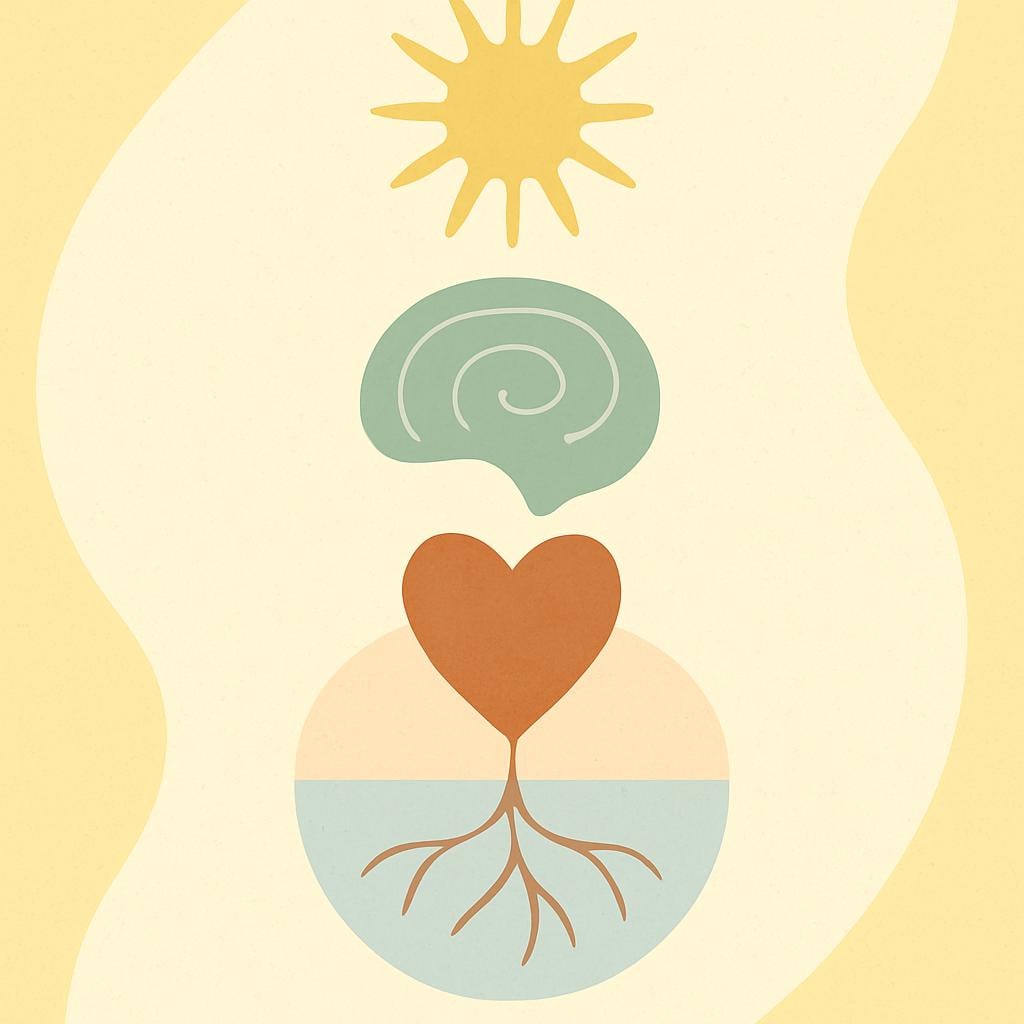Have you tried numerous anxiety-relief methods but find that relief is often temporary or incomplete? Many traditional approaches miss a crucial holistic perspective, neglecting the interconnected roles of your body, mind, and heart in anxiety management. The Body–Mind–Heart Method addresses these gaps, offering comprehensive, lasting relief. In this blog, I’ll explain why integrating all three components, body, mind, and heart, is essential for truly effective anxiety management.
Why Focusing Only on the Mind Often Falls Short
Traditional cognitive approaches primarily target your thoughts. While changing thought patterns can provide immediate relief, anxiety often resurfaces because underlying physical and emotional triggers remain unaddressed.
Body: The Missing Physical Connection
Anxiety lives as much in your body as in your mind. Physical symptoms like tension, rapid heartbeat, and shallow breathing are not just reactions—they actively perpetuate anxiety. Addressing these bodily symptoms through gentle somatic practices like deep breathing and grounding exercises can break this physical anxiety loop.
- Practice deep breathing exercises regularly to reset your nervous system.
- Use grounding techniques to anchor yourself in the present moment physically.
Mind: Essential but Not Sufficient Alone
Cognitive methods like reframing thoughts or DBT skills are valuable tools to manage anxiety. However, without physical calming and emotional healing, cognitive techniques often don’t lead to sustained improvements.
- Gently observe and question anxious thoughts.
- Develop practical emotional regulation skills.
Heart: Healing Emotional Foundations
Emotional wounds, subconscious fears, and unresolved self-critical patterns often underpin anxiety. Without addressing these deeper emotional layers, anxiety relief remains superficial and temporary.
- Practice regular self-compassion exercises to soothe deeper emotional vulnerabilities.
- Engage in inner-child work to heal underlying emotional triggers effectively.
Integrating the Three Components
An effective daily approach might include:
- Morning (Body): Grounding exercises to physically calm your nervous system.
- Afternoon (Mind): Cognitive reframing and DBT exercises to manage emotional stress.
- Evening (Heart): Self-compassion practices or journaling to address deeper emotional patterns.
This holistic routine provides comprehensive anxiety relief and fosters long-term emotional resilience.
✨ Ready for holistic, lasting relief? Explore the Holistic Healing Therapy Workbook Bundle, designed with structured Body–Mind–Heart practices to comprehensively address and heal anxiety from every angle.
FAQ:
Q: Why haven't cognitive techniques fully resolved my anxiety? A: Cognitive techniques often neglect underlying physical and emotional factors crucial for sustained relief.
Q: Can beginners use this comprehensive method easily? A: Absolutely. The Body–Mind–Heart Method is intuitive and beginner-friendly.
Q: How quickly can I expect results? A: Immediate calming effects occur through body-level techniques, with deeper emotional relief developing consistently over time.
Q: Can this method complement therapy? A: Yes, it significantly enhances traditional therapeutic approaches.
Q: Are these methods suitable for all ages? A: Yes, they are gentle and effective for both adults and young people.

